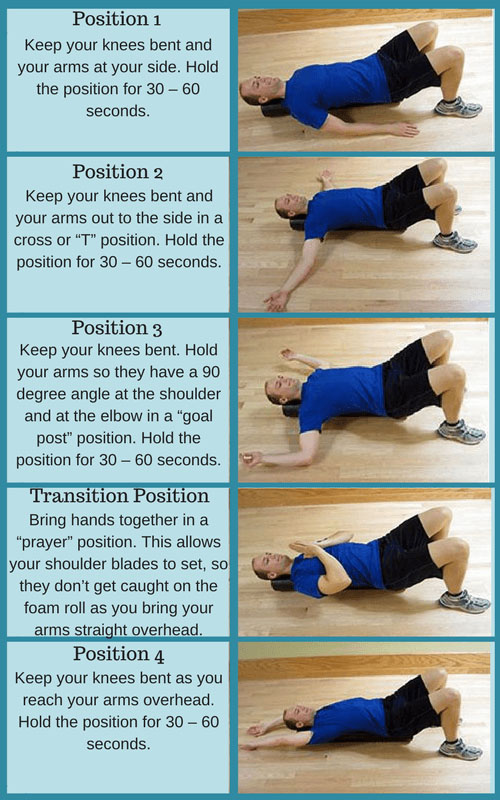Cervical (neck), thoracic (upper back), and shoulder pain is often caused from stiffness in the thorax. We spend so much of our day sitting slouched or standing hunched over (in a forward flexed position for the thoracic spine) that we lose normal mobility. This stiffness in the thorax can cause compensation patterns in our cervical spine and shoulders. Over time, this can develop into painful areas.
The key to eliminating pain is to improve posture and improve the mobility of the thoracic spine, so the neck and shoulders no longer have to compensate for the lack of mobility.
In this guest post for Get Correct Posture, you will discover different exercises to help you achieve better posture.

Q. If you were to recommend just one exercise for someone to help them improve their posture, what would you recommend and why?
A. The number one exercise to improve posture? I don’t have just one exercise, but a series of exercises that I recommend. These stretches are designed to counteract the stresses and postures of daily life and to restore the normal mobility to the upper back.
I prefer to use a foam roller, but you could utilize several rolled up towels as well or possibly a water noodle with or without towels rolled around it. The key is to have a fairly firm surface which you can lay on that will not impede shoulder mobility.

Repeat the routine twice, at least 1-2 times per day as needed.
A variation of the foam roll stretches could also be to lie over a large Thera-Band Exercise Ball and perform the same arm positions.
When performing these exercises, it’s important to understand that stretching should never be painful. You should feel a mild to moderate stretching sensation. If you start to experience numbness or tingling in the hands or arms, you should discontinue the stretch at that time.
When performed regularly, these simple exercises will help you to improve poor posture and can be performed anywhere.
Continue reading for expert recommendations on which exercises to perform in order to improve your posture.
